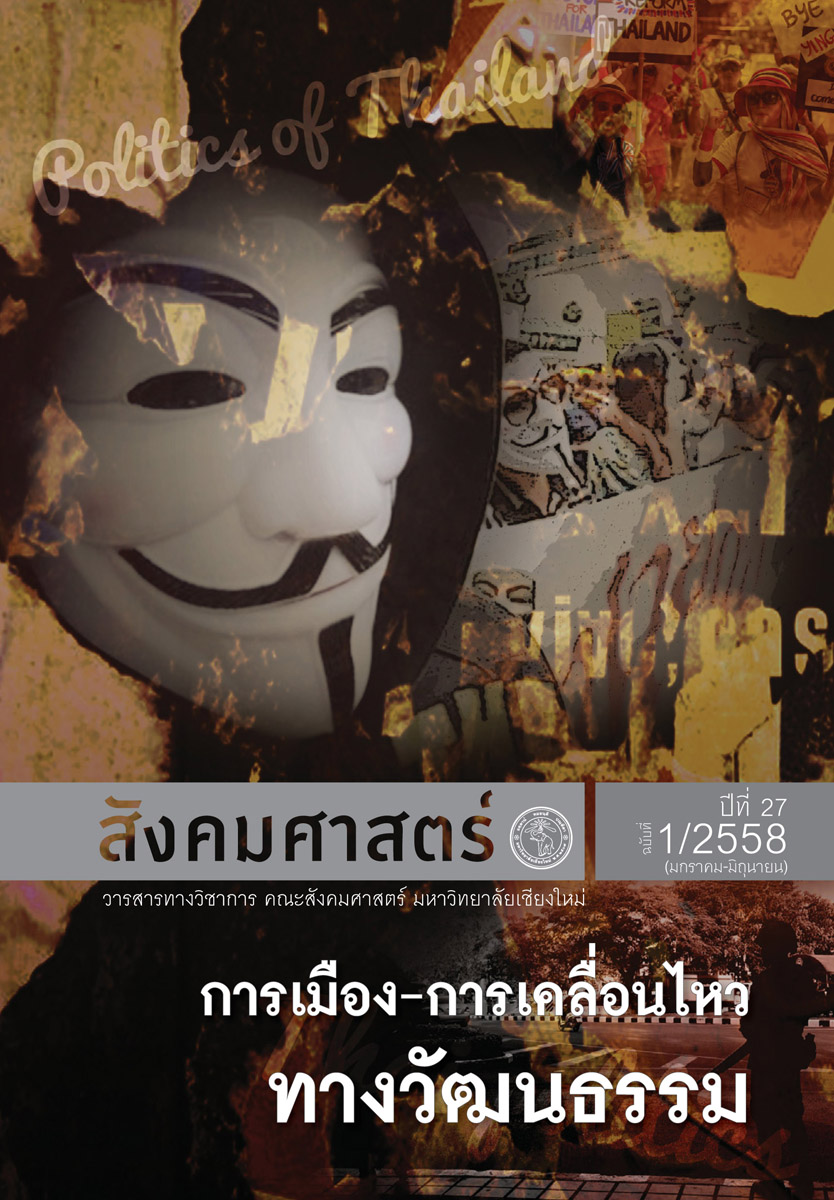Display as the Political Space
Main Article Content
Abstract
This article examines the understanding of museum and display through sensory concept and epistemology so as to unravel the ideological practice that is hidden behind the background of museum works.
The heart of the article dwells in the exploration of problems related to modernity and conceptual debate on sensory. On the one hand, the communication form in museum is determined by seeing, which is related to rationality. On the other hand, the way of seeing has come to be legitimated with power relationship, racism ideology and ideological colonialism.
These highlighted issues do not merely reveal the limited narration within the display only. They reflect a limitation of ideas in museum that cannot be extended beyond itself into a space of cultural contestation.
Article Details
All written articles published on Journal of Social Sciences is its author’s opinion which is not belonged to Faculty of Social Sciences, Chiang Mai University or is not in a responsibility of the journal’s editorial committee’s members.
References
Classen, Constance. 1993. Worlds of Sense: Exploring the Senses in History and Across Cultures. London and New York: Rutledge.
Classen, Constance. 1997. “Foundations for an Anthropology of the Senses,” International Social Science Journal 153: 401-412.
Classen, Constance. 2012. The Deepest Sense: A Cultural History of Touch (Studies in Sensory History). Chicago. University of Illinois Press.
Classen, Constance and David Howes. 2006. “The Museum as Sense scape: Western Sensibilities and Indigenous Artifacts”. In Edwards Elizabeth, Chirs Gosden and Ruth B. Phillips (eds.), Sensible objects: Colonialism, Museums and Material Culture. Berg.
Elias, Norbert. 1994 [1939]. The Civilizing Process. Edmund Jephcott (trans). Oxford.
Blackwell.
Fiennes, Celia. 1949. The Journeys of Celia Fiennes. London: Cresset Press.
Howes, David. 2003. Sensual Relations: Engaging the Senses in Culture and Social
Theory. Ann Arbor. MI: University of Michigan Press.
Ingold, T. 2000. The Perception of the Environment: Essays on Livelihood, Dwelling
and Skill. London: Routledge.
Jackson, M. (ed.). 1996. Things as They are: New Directions in Phenomenological Anthropology. Bloomington: Indiana University Press.
L’Isle-Adam, Villiers de. 1982. Tomorrow’s Eve. R. Martin Adams (trans.). Urbana IL: University of Illinois Press.
Latour, B. 2003. Politics of Nature: How to bring the Sciences into Democracy.
Cambridge. MA: Harvard University Press.
Ong, W. J. 1991. “The shifting sensorium”. In D. Howes (ed.), Empire of the Senses. Oxford: Berg.
Schiller, Fredrick. 1982. On the Aesthetic Education of Man. E. M. Wilkinson and L. A. Willoughby (ed. and trans.). A. Willoughby. Oxford University.
Stoller. P. 1989. The Taste of Ethnographic Things: The Senses in Anthropology. Philadelphia. University of Pennsylvania Press.
Sullivan, Lawrence. 1986. “Sound and Senses: Toward a Hermeneutics of Performance,” History of Religions 26(1): 1-13.
Taussig, Michael. 1993. Mimesis and Alterity: A Particular History of the Senses. New York. Routledge.
Thomas, Nicholas. 1991. Entangled Objects: Exchange, Material Culture and Colonialism in the Pacific. Cambridge. MA: Harvard University Press


